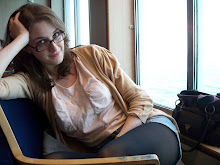Charles Ross is one of the many land artists who emerged in the late 1960s/early 1970s and created site specific natural art works using whatever media they could find or build. Ross differed from many of the other land artists though, as his interests lie in science and physics. He utilises his scientific knowledge to create aesthetically pleasing art work, such as a light spectrum of colours we see in a rainbow.
Built in 1971, in New Mexico, 'Star Axis' by Ross is a sculpture/structure which extends our environment into the night sky and the stars. From different angles and areas of the sculpture you can witness different wonders of our universe. You can view daily and seasonal movements of our sun, you can view the rotation of the earth, the stars which are visible from near the equator, you can also see thousands of years of the axial precession of the earth in the 'Star Tunnel'. The whole sculpture is precisely in line with the earth's axis, as it points towards the North Star, Polaris.
I find this particularly artwork fascinating. It is almost not an art work, more a scientific tool, or observatory of sorts. I feel this work is a kind of planetarium, but the largest scale possible planetarium or observatory you could find, as it allows you to view the real stars millions of miles and light-years away.
Monday, 9 January 2012
Saturday, 7 January 2012
Melissa Gould, A.K.A. MeGo
Melissa Gould explores historical events and memories through installation, she is inspired by historical documents and work closely studies the memories of twentieth century events and conflicts. A large part of her work is focusing on places/spaces. She looks at places which no longer exist, due to war, or a space which has emotions and memories attached to it, as it used to be a site of significance.
'Floor Plan', 1991, is a Holocaust Memorial artwork. It consists of a light-up floor plan of a destroyed synagogue in Berlin. The piece is made up of 110 fluorescent tubes, just slightly underground, and is intended to be witnessed after dark. The light, for Gould, symbolises "the eternal burning light in all synagogues", life itself and tragic fires during the Second World War. As well as light, sound composed by Alvin Curran echoes out of speakers also underground. Human voices accompany the floor plan to create a ghost-like atmosphere, representative of a once existing building and lives, torn apart by war.
Similar to 'Floor Plan', 'Ghost Ship/The Titanic Project' is a floor plan of a now non-existent place/space in light, part of a series by Melissa Gould called 'Memorial Lightscapes'. 'Ghost Ship' will be a life size light projection (882 feet long) of the Titanic ship onto the Hudson River in New York City where it was supposed to end its first voyage. This will take place from April 2012 onwards; the 100th anniversary of the Titanic sailing, and sinking. The deck plan of the Titanic will be visible only at night, once dark. Gould sees her work as memorials of places which no longer exist in the physical sense, but still have psychological meanings, her work is dedicated to memory and loss. Her interest in historical documents and artefacts is clearly visible as the floor/deck plans she uses are the true historical blue prints for the original spaces.
In 1991, Gould, or MeGo as she is also known, created 'Constellation Park'. This piece was a space similar to a golf course, and had fitted 'stars' across the landscape. The lights/stars showed constellations and the artwork explored scale as the audience walked in, around and all over the installation.
'Floor Plan', 1991, is a Holocaust Memorial artwork. It consists of a light-up floor plan of a destroyed synagogue in Berlin. The piece is made up of 110 fluorescent tubes, just slightly underground, and is intended to be witnessed after dark. The light, for Gould, symbolises "the eternal burning light in all synagogues", life itself and tragic fires during the Second World War. As well as light, sound composed by Alvin Curran echoes out of speakers also underground. Human voices accompany the floor plan to create a ghost-like atmosphere, representative of a once existing building and lives, torn apart by war.
Similar to 'Floor Plan', 'Ghost Ship/The Titanic Project' is a floor plan of a now non-existent place/space in light, part of a series by Melissa Gould called 'Memorial Lightscapes'. 'Ghost Ship' will be a life size light projection (882 feet long) of the Titanic ship onto the Hudson River in New York City where it was supposed to end its first voyage. This will take place from April 2012 onwards; the 100th anniversary of the Titanic sailing, and sinking. The deck plan of the Titanic will be visible only at night, once dark. Gould sees her work as memorials of places which no longer exist in the physical sense, but still have psychological meanings, her work is dedicated to memory and loss. Her interest in historical documents and artefacts is clearly visible as the floor/deck plans she uses are the true historical blue prints for the original spaces.
In 1991, Gould, or MeGo as she is also known, created 'Constellation Park'. This piece was a space similar to a golf course, and had fitted 'stars' across the landscape. The lights/stars showed constellations and the artwork explored scale as the audience walked in, around and all over the installation.
Labels:
architecture,
constellations,
history,
installation,
landscape,
light,
Melissa Gould,
memory,
projections,
scale,
site project
Subscribe to:
Comments (Atom)




